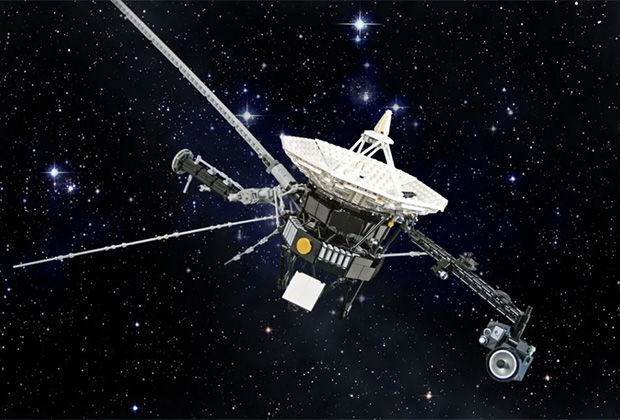The device is in interstellar space TASS, August 20.
The Voyager 2 probe, which received the first images of Saturn's rings and so far the only photos of Uranus and Neptune, celebrates today the 45th anniversary of its launch into space. He continues to study the turbulent boundary between the Solar System and the interstellar medium, the press service of NASA's Jet Propulsion Laboratory (JPL) reported on Saturday.
"Now Voyagers are in interstellar space, where they supply all mankind with information about these unexplored territories every day. Thanks to these probes, we have the opportunity to trace the interactions of the Sun with interstellar magnetic fields and charged particles for the first time. Our measurements have already called into question many theories," said Linda Spilker, deputy head of the Voyager mission, whose words are quoted by the JPL press service.
The Voyager 1 and Voyager 2 probes were launched by NASA in late August and early September 1970 to study giant planets and the outskirts of the Solar System. Over the next few decades, American interplanetary stations collected a huge amount of information about Jupiter, Saturn, Uranus and Neptune, and also discovered several new moons near these worlds.
At the moment, Voyager 1 remains the farthest spacecraft from Earth. He moved away from our planet at a distance of 23.4 billion km, or 157.01 astronomical units, the average distance between our planet and the Sun. Voyager 1 officially left the heliosphere, a "bubble" of solar wind plasma surrounding the Solar System, at the end of August 2012.
The second spacecraft, Voyager 2, left the heliosphere much later, in December 2018, when it was at a distance of 119 astronomical units from Earth. Its entry into the interstellar medium has become a noticeably more important event for scientists for the reason that they were able to measure the properties of the interstellar medium for the first time using the instruments of this probe.
The first data of this kind was published by Ed Stone, the head of the Voyager program, and leading NASA specialists, in November 2019. The data collected by Voyager 2 for the first time indicated that the heliosphere has no permanent boundaries - it is constantly decreasing and expanding along with the cycle of solar activity.
In addition, Voyager 2 discovered a number of unexplained oddities in the behavior of interstellar magnetic fields, which turned out to be much less chaotic than scientists expected to see. In addition, the level of cosmic radiation in the interstellar medium turned out to be about three to four times higher than inside the heliosphere, which must be taken into account when organizing subsequent interstellar missions.
Now both probes continue their journey in interstellar space, despite a number of technical malfunctions and problems with diagnostic systems that were recorded on board Voyager 2 in January 2020, and on board Voyager 1 in July this year. Scientists hope that both probes will continue to collect scientific data until their radioisotope energy sources are completely depleted.

